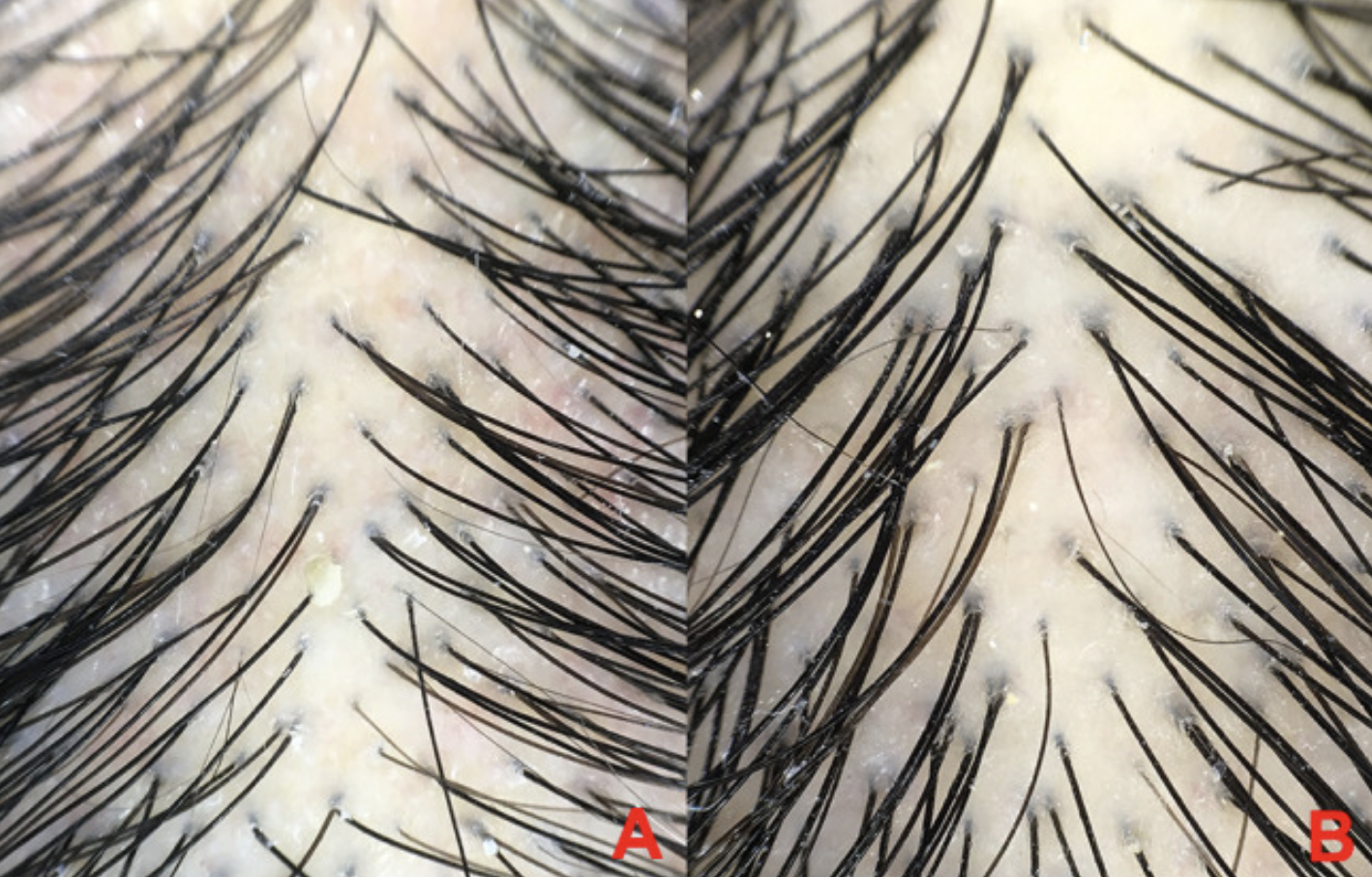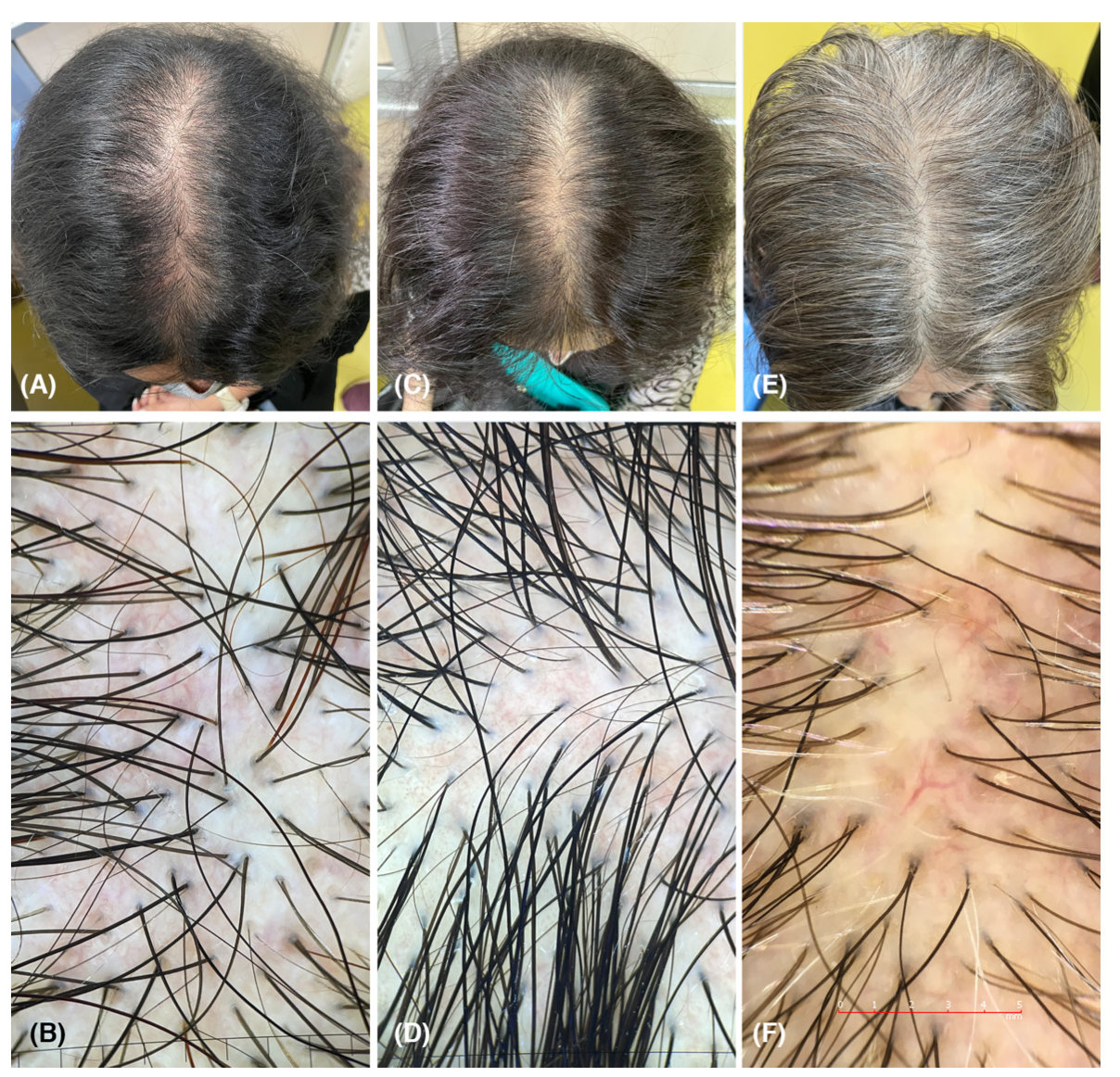Dilated Scalp Blood Vessels: Is this an important Sign of Prior COVID Infection?
Capillarectasia: Is this a potential feature of COVID related TE?
When one looks in the published medical literature, it’s possible to see that the the most common trichoscopic findings of covid associated telogen effluvium (also called CATE): are decreased hair density, empty follicles, and short regrowing hairs. These are identical to the trichoscopic features of classic acute telogen effluvium from any cause (low iron, weight loss, medications, etc)
Is capillarectasia found in COVID associated telogen effluvium?
In 2021, Lv et al. reported by that “capillarectasia” or arborizing dilated blood vessels was seen in case of CATE along withother classic features.
Dilated blood vessels (left) in patient with COVID 19 associated telogen effluvium. SOURCE: Lv S et al. A Case of Acute Telogen Effluvium After SARS-CoV-2 Infection Clin Cosmet Investig Dermatol. 2021; 14: 385–387. Published online 2021 Apr 16. Used with creative commons license
In a new study, authors for Iran propose that there may truly be something important about these dilated blood vessels. Saber et al propose that scalp capillarectasia along with other trichoscopic features of TE may be useful for discriminating CATE and classic TE (this is assuming that other common diseases causing dilated vessels like seborrheic dermatitis are not present).
Dilated blood vessels (capillarectasia) in a patient with COVID associated telogen effluvium. SOURCE: Saber M et al. Scalp capillarectasia as a trichoscopic sign of COVID-19-associated telogen effluvium. J Cosmet Dermatol. 2023 Mar 9. used with creative commons license.
The authors remind us that medium to small blood vessel dilation is highly prevalent in many organs in patients with COVID-19 infection. This includes the lung, kidney, liver, and retina.
The authors highlight this sign in order to stimulate further research in this area.
Summary and Comment
This is interesting and certainly more study is needed. My concern here is that dilated blood vessels can be non specific and often found when examining the scalp. Nevertheless, there could be something important here to study!
It could be that the dilated vessels are closely linked to the “trichodynia” that patients feel. Many patients with COVID related hair loss have unusual symptoms like burning, tingling, buzzing. A study by Willimann and Trueb in 2002 showed that dilated blood vessels seen in the scalp were strongly associated with trichodynia. One wonders whether the link between COVID and capillarectasia is the dilated blood vessels.
REFERENCES
Saber M et al. Scalp capillarectasia as a trichoscopic sign of COVID-19-associated telogen effluvium. J Cosmet Dermatol. 2023 Mar 9
Lv S et al. A Case of Acute Telogen Effluvium After SARS-CoV-2 Infection Clin Cosmet Investig Dermatol. 2021; 14: 385–387. Published online 2021 Apr 16.
Willimann B, et al. Hair pain (trichodynia): frequency and relationship to hair loss and patient gender. Dermatology. 2002
.
This article was written by Dr. Jeff Donovan, a Canadian and US board certified dermatologist specializing exclusively in hair loss.



